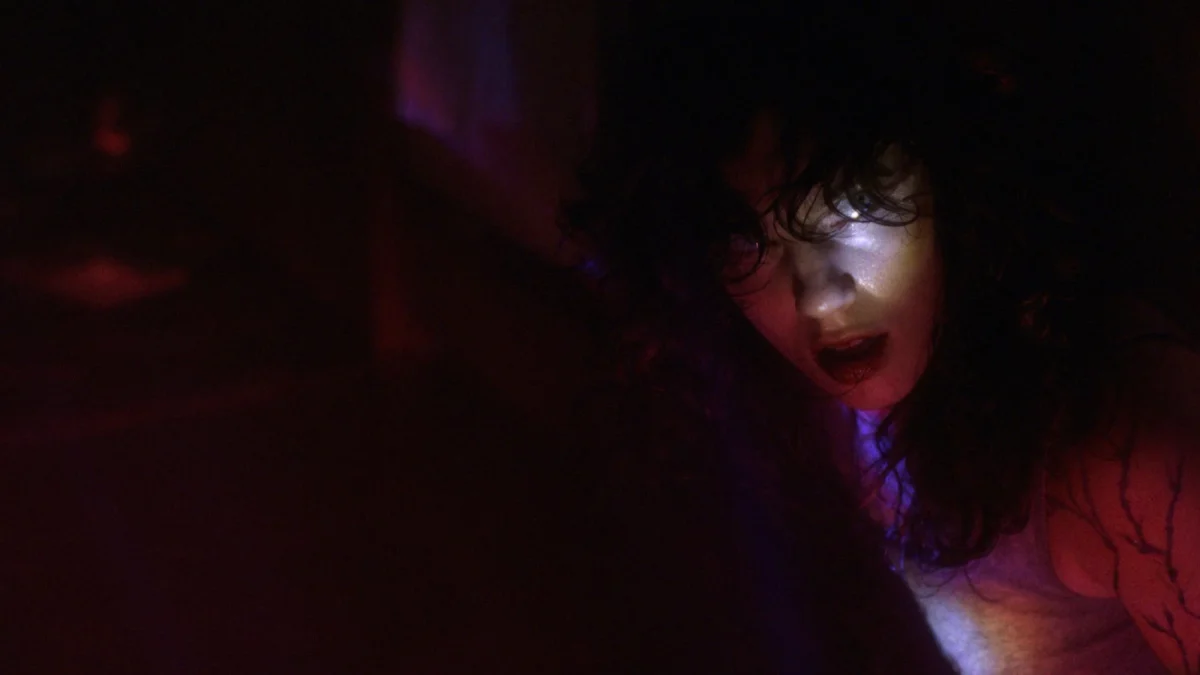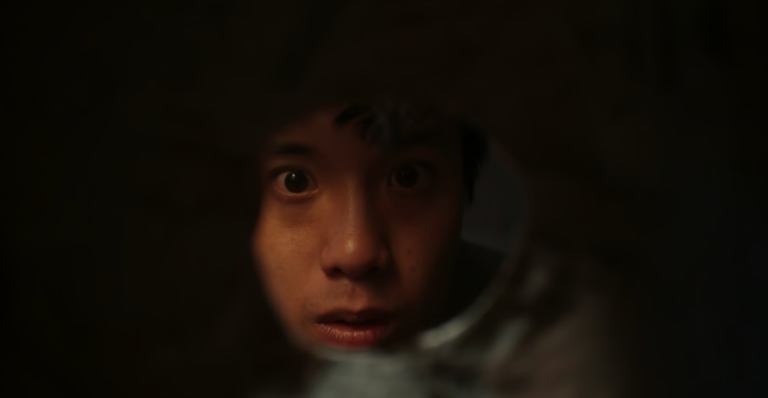Survival films often operate on the aesthetic of paranoia, using it as a framework to explore just how dangerous stepping out of your comfort zone can be. That space might be a world infested with zombies or, more chillingly, a single locked location that traps you with your own dread. That’s exactly the kind of claustrophobic survival drama “Hellcat” (2025) delivers through Lena, its troubled protagonist.
When Lena wakes from a seemingly endless sleep, she finds herself not only horrifically wounded but also trapped inside a moving camper trailer. The place is well-lit and contains all the essentials needed to survive—except, crucially, survival itself. Her captor is a middle-aged man who mostly exists through voice alone. He insists he’s a “good man” and an “honest man,” but his rambling autobiography of male loneliness offers little solace to Lena, whose condition is spiraling from within.
If that premise prepares you for a straightforward thriller about human persistence and female endurance, reset those expectations. Writer-director Brock Bodell—making his feature debut—uses body horror and gritty endurance motifs not to tell a tale of resilience, but to unravel something far more masculine and self-referential.
This is a film teeming with daddy issues, practically dripping from Clive, the man behind the wolf-head mount who terrifies Lena even as she grapples with her own existential collapse. Clive, who just might be trying to protect Lena—a pregnant young woman—and her unborn child, is plagued by turmoil of his own. Late in the film, we discover the central truth: this is a road movie featuring not one, not two, but three turning werewolves.
That revelation, however, arrives very late. The entire first hour unfolds within a tightly designed space, structured to obscure the film’s genre allegiance. The camper isn’t a tribal purgatory with grotesque wall markings or bizarre cult symbology. It doesn’t lean into offbeat genre bait. Instead, it’s weirdly warm and livable.
There’s a fridge full of Clive’s medical syringes, a disco ball, even a karaoke setup—all remnants of his late wife’s hobbies. When Lena finally stops throwing things in frustration and begins to settle, she stumbles upon comics and strange books. Flipping through them is the first sign of a connection between captive and captor. These moments suggest that Bodell, trained as an editor, leans on his sharp instincts to build grit and rhythm into his filmmaking.

Lena’s exhaustion and desperation saturate the air inside the trailer. As her body begins to change, the blood inside her seems to rebel. We get terse zoom-ins of blood clots forming under the skin—a pure visual beat, but delivered with such searing honesty it becomes one of the film’s most raw and effective stretches. Even when Lena escapes with her phone and backpack, the looming dread doesn’t dissolve. The tension persists, and the ominous tone never lets up.
That pressure is carried masterfully by Dakota Gorman. The 34-year-old indie actress sells Lena’s survival instinct by portraying her as a woman of contradictions: young, full of potential, but already feeling old and frayed under the weight of trauma and pregnancy. Todd Terry, best known from “Breaking Bad,” voices Clive with just the right blend of restraint and disquiet. His performance feels lived-in—never overplaying the subtext, knowing full well that the film reveals more about him than the character it’s ostensibly about. Liz Atwater, as Clive’s daughter, brings thoughtful weight to her role, though the script underuses her in favor of a male-driven emotional arc.
That imbalance is part of the script’s broader problem. Bodell’s writing never quite matches the tension of his direction or the impact of Andrew Duensing’s cinematography. Drawing on his own recent experiences as a new father, Bodell lets the script lean too heavily into sentimentality. The result is a horror-thriller that wants to be sharp but ends up blurred around the edges.
The third-act villain introduction is an outright misfire—sudden, awkward, and lacking payoff. The climax’s big reveal, intended as grotesque yet tender, misses the mark because the writing can’t support its emotional ambition. The film wants to locate the heart within a heightened premise, but that heart is so off-balance that it slides out of place just when it’s supposed to hold everything together.
In the end, “Hellcat” isn’t quite the sharp, coherent shocker it sets out to be. But its conviction, its tight control of mood, and its willingness to reach into raw thematic space suggest Brock Bodell is a director to watch. Despite its flaws, this is a film that tries to say something in a voice of its own—even if that voice occasionally howls more than it speaks.






![Blindspotting [2018] Review: Change The Way You See](https://79468c92.delivery.rocketcdn.me/wp-content/uploads/2019/01/blindspotting-screenshot-2-768x414.jpg)
